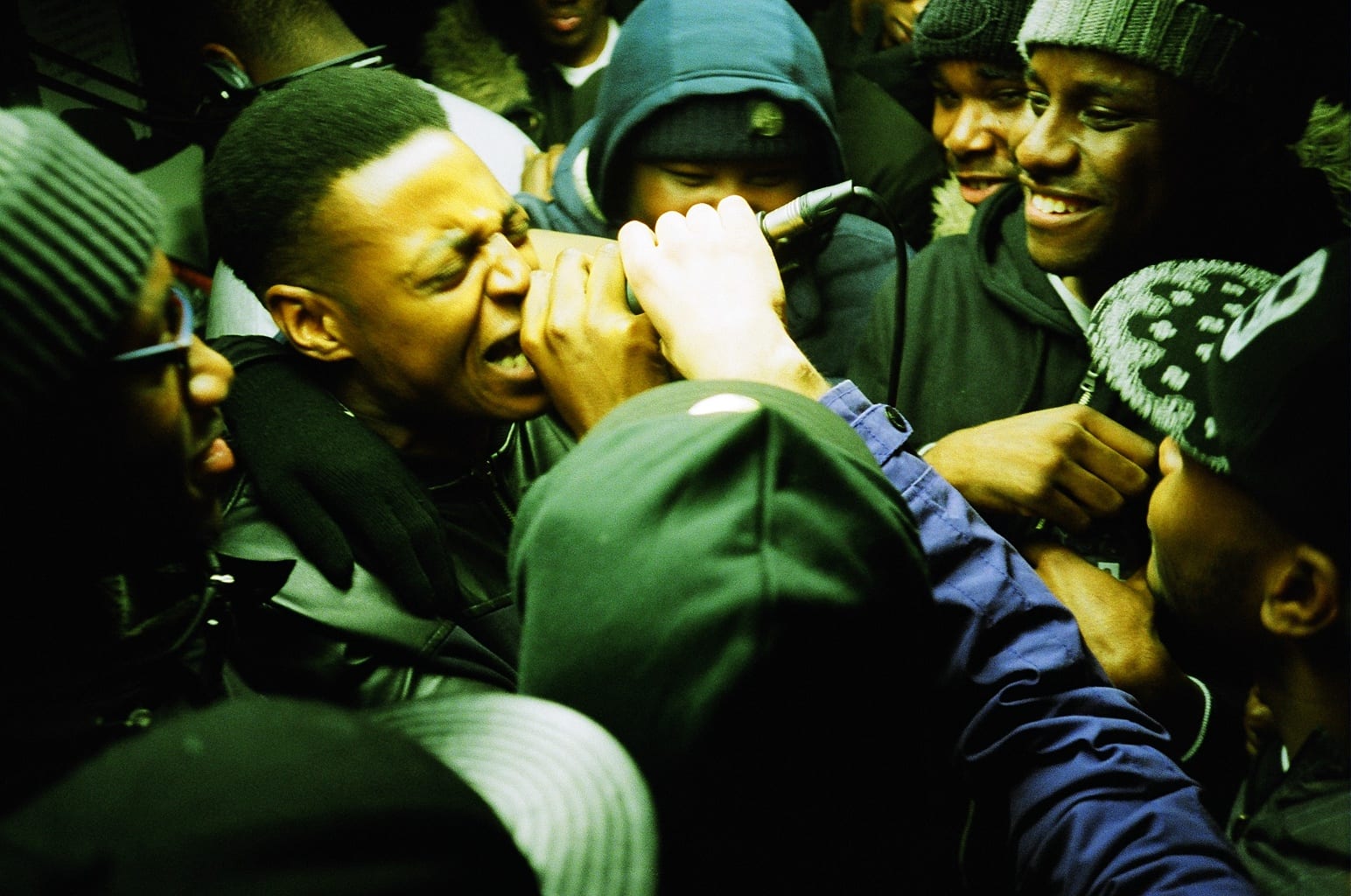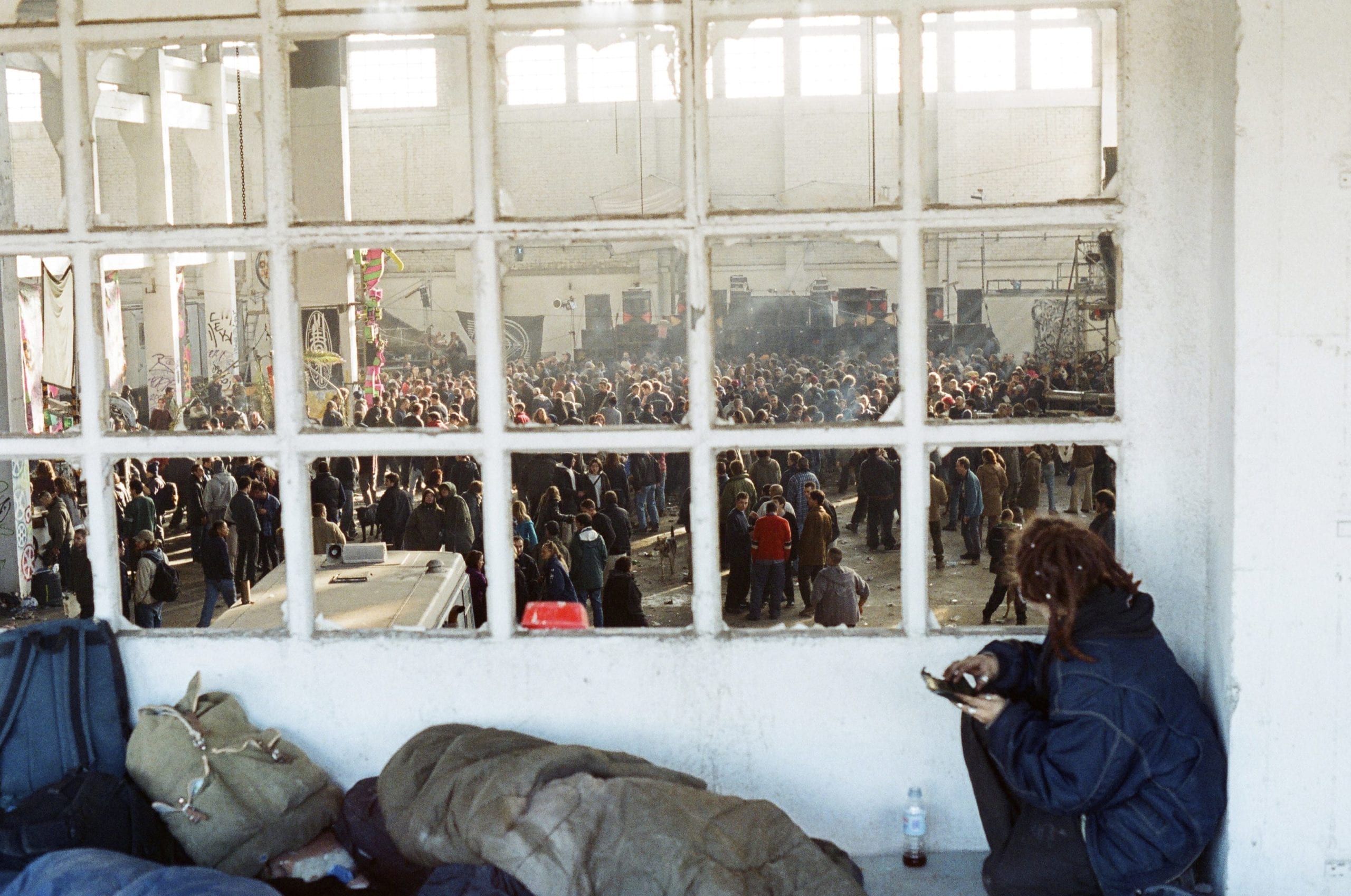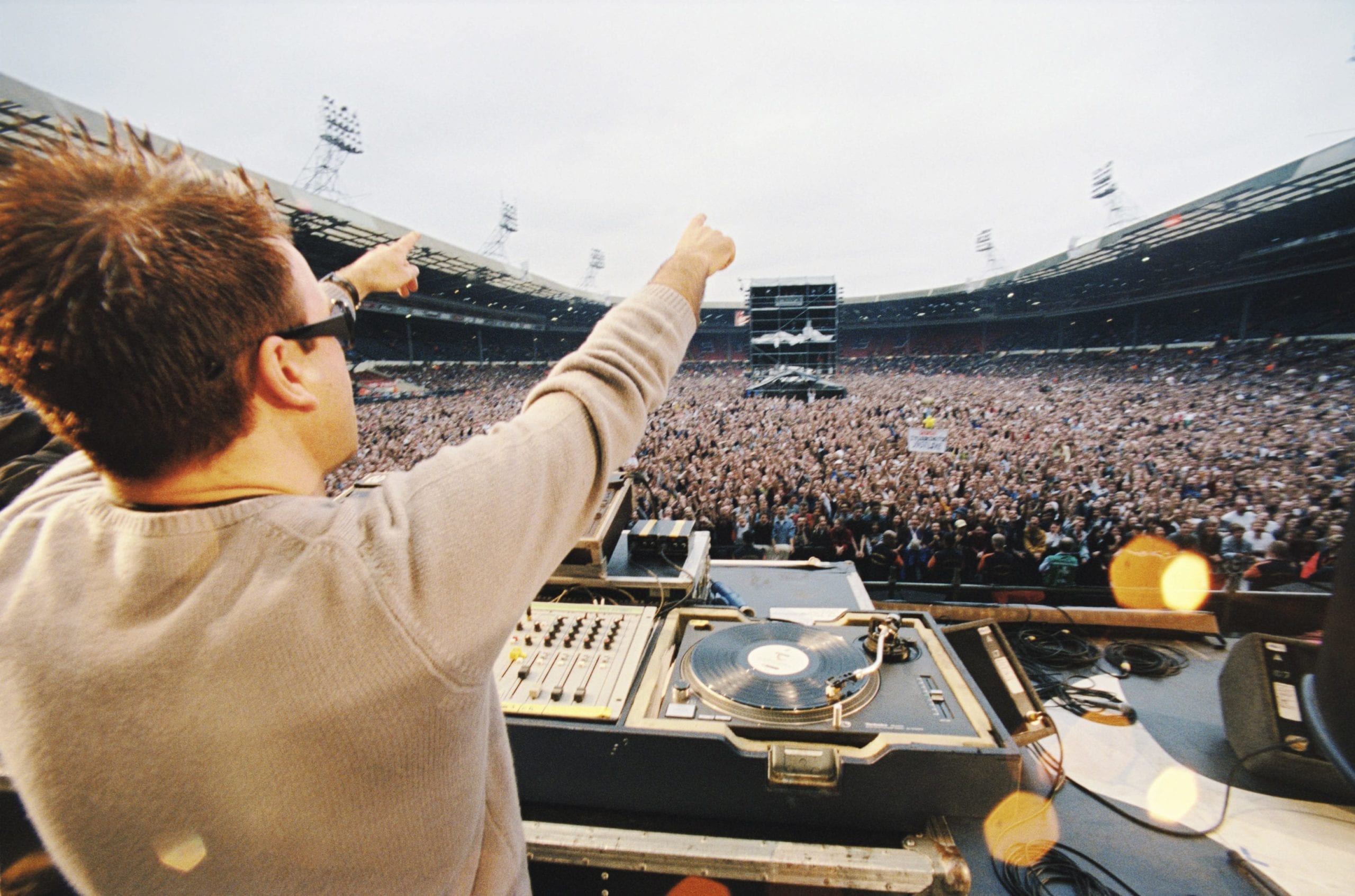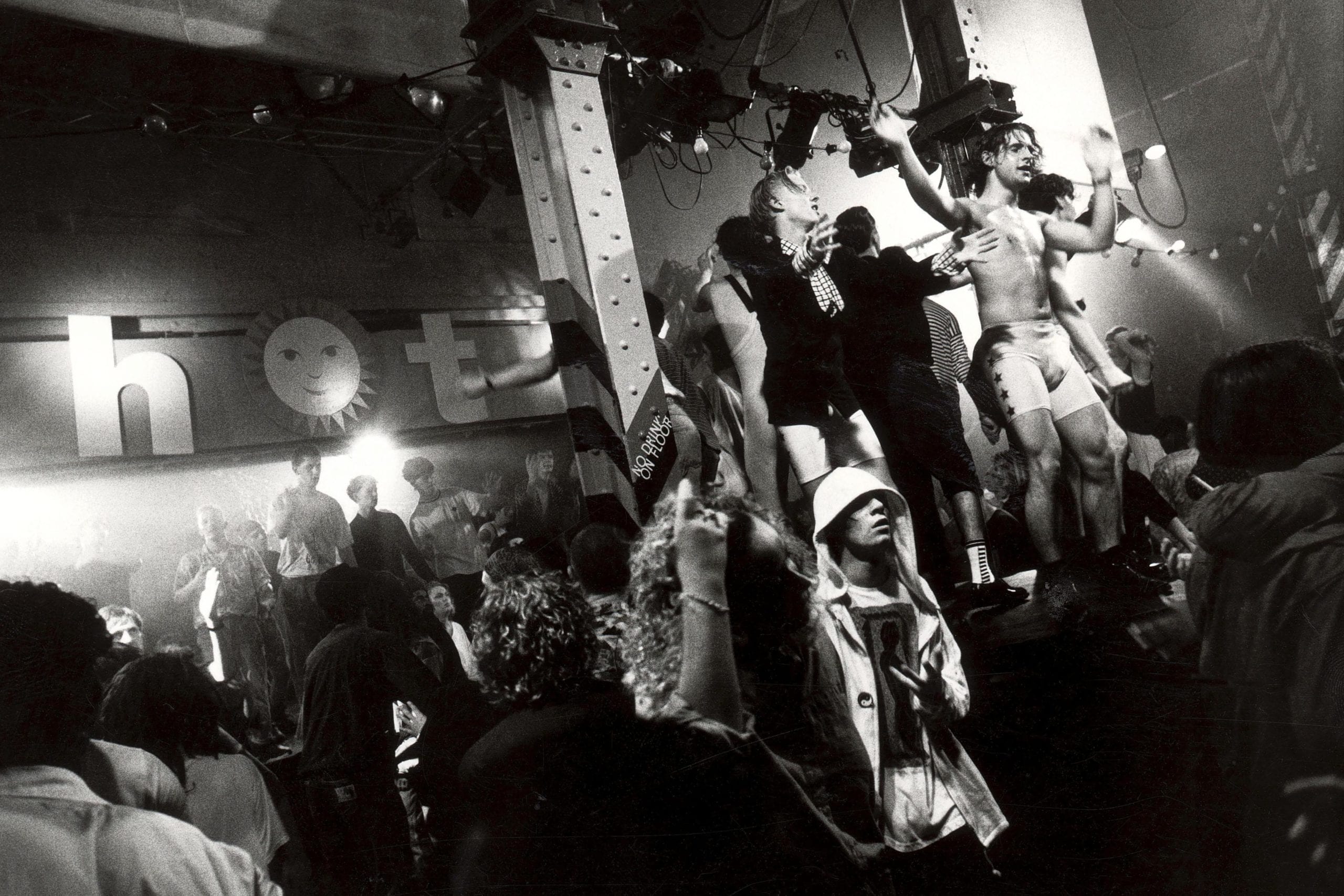BJP: You’re always connected to the era you grew up in, but although I don’t have that connection to Ibiza I’m aware of the effect it’s had on music and youth culture. People have a real curiosity about scenes and subcultures they didn’t experience that have moved past their specific moment.
Jamie Brett, PYMCA: It’s transferrable. I think the exhibition is going to transcend a lot of different scenes all interlinked through that common emotion, almost like a nostalgia. When we were working with the archive imagery we wanted quite an inclusive vibe to trigger all sorts of things, so this spans all sorts from early house to new rave.


Leo Scott: If you’re into an era – I’m into post-punk and progressive music myself – but seeing the stuff we’re seeing here, I know the Haçienda feeds into all of that. So wherever you are, whatever age you are, you can take your own interests to the experience. Just seeing the progression and some of the influences through this story is just fascinating. I don’t know half the stuff these guys do about dance music, but it’s amazing to see the beginnings of certain sounds and to hear stories of Fat Boy Slim, the start of that big beat sound, it’s all amazing to just learn that.
BJP: Almost like an Alternative British History. That educational aspect is quite important because those countercultural moments in British history, like warehouse raves and open air parties, they are much harder to experience for young people now, with things like the Criminal Justice Act.
Leo Scott: Things are also commercialised very quickly now, whenever any subculture or new movement is quickly identified as fashionable.


Grant Fleming, creative director of the project: Social media can help spread the word, but also can kill the underground nature of it. It’ll be over in a day. The sort of really edgy, not-totally-legal things are really difficult now – as much as people spread something on social media, it’s being monitored by social media as well.
Jamie Brett: Some aspects are still going, though. We have a few photographers in the archive that are still finding them and literally finding scenes in strange places, like old quarry areas.
Grant Fleming: I’m not a fan of nostalgia. Even though I’m a photographer and I was involved in the scenes depicted, I’m really not into looking back. We’ve surpassed things like 80s roadshows now. People have realised it’s all part of the same line, the dots are all connected – the fashion, the music and the imagery. It all goes back and it all springs forward, to say it’s nostalgic is to say it’s a finite time to it. There are still great things to come.

